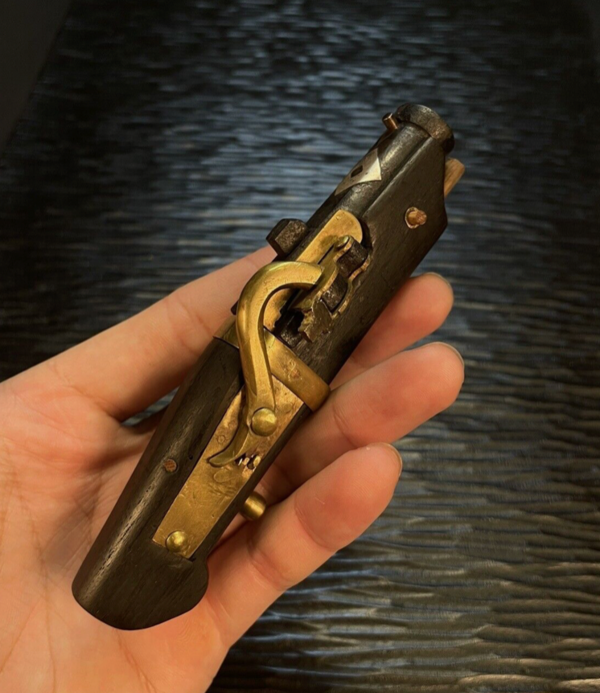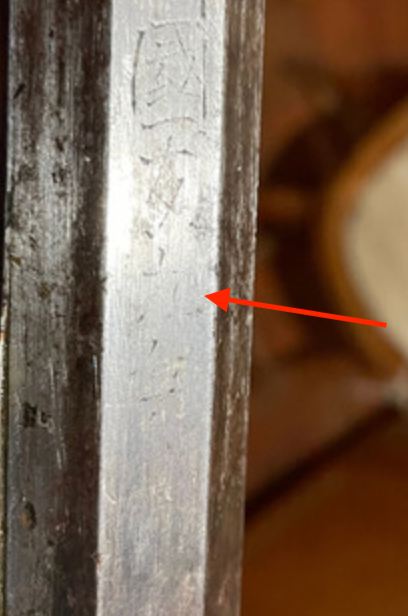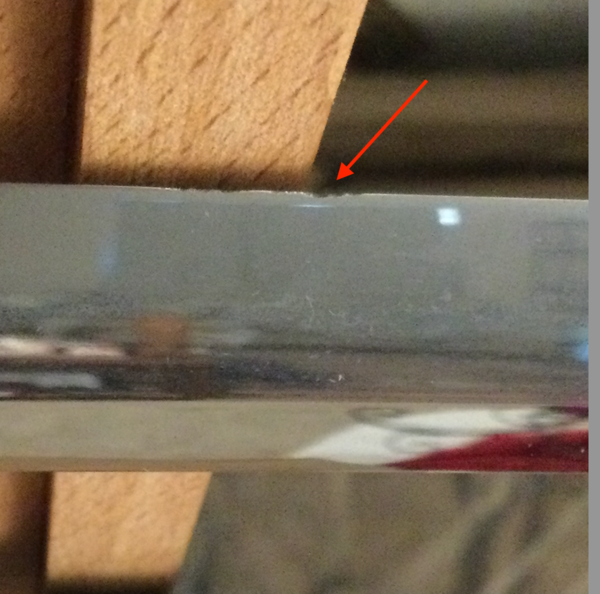
John C
Members-
Posts
2,443 -
Joined
-
Last visited
-
Days Won
15
Content Type
Profiles
Forums
Events
Store
Downloads
Gallery
Everything posted by John C
-
Nicholas: I can tell you the numbers on the right of the picture (0) 652 would be assembly numbers. The left is probably the makers name. The red M (?) at the top is likely the shop mark. John C.
-
Stock looks split, however if it fires (firing pin not bent, etc.) 500 dollars is a decent price for any rifle nowadays. Just my two cents. John C.
-
A GENUINE EDO PERIOD TEPPO NETSUKE
John C replied to watsonmil's topic in Tanegashima / Teppo / Hinawajū
Reviving an old thread just because I happened across it. The one below, based on the article by Ron, seems to be an outright fake. To be fair, the seller does not list it as genuine or old. https://www.ebay.com/itm/266513917210 John C. -
Where' the Shoshin site gone ?
John C replied to Alex A's topic in General Nihonto Related Discussion
The shibuiswords would not open for me, however this one did: https://shibui.com/collections/weaponry Is that the same thing? John C. -
-
Paul: I agree with those above. That's a lot of money for a showato. You could probably get a Gendaito (traditionally made blades) for that. Be patient and look around some more. Showato, even nice examples, should be in the 1200 to 1800 dollar (900 to 1300 euro) range. But as noted above, you may be in a tight market. John C.
-
Could be a Swords of Northshire build. https://www.swordsof...ed-1095-steel-katana John C.
-
View into Blade Construction
John C replied to Bruce Pennington's topic in General Nihonto Related Discussion
In reference to the chips on my blade, it is a star stamped gendaito from Kunimitsu. So not sure which construction method would have been used. John C. -
View into Blade Construction
John C replied to Bruce Pennington's topic in General Nihonto Related Discussion
I can't get a picture of it, however under a loupe the chip looks like a hole with a line of darker steel running under it. Kind of like if you dug a hole and saw the top of a dark pipe running through it. That's what it looks like to me, however I am almost always wrong when it comes to sword stuff. Could be a ware but having not seen one under steel before (it's the only blade I have with a chip) I'm not sure exactly what I'm looking at. John C. -
View into Blade Construction
John C replied to Bruce Pennington's topic in General Nihonto Related Discussion
Bruce: It's too difficult to see in this pic, however under a loupe you can see the kobuse core inside this chip. Blade was polished too thinly I suppose. John C. -
Help identifying Japanese WW2 Banner
John C replied to AlphaRaider's topic in Translation Assistance
I can't decipher it, however as you may know "special attack force" in the Navy generally referred to Kamikaze. John C. -
Type 98 Noshu ju Tanba Kanenobu. Father or son?
John C replied to MacTheWhopper's topic in Translation Assistance
There is some discussion about a father/son Kanenobu on this thread: John C. -
Wally Hostetter (Florida, I think) does this kind of work, though I do not have personal experience with him. https://shiningmoon13.com John C.
- 11 replies
-
- katana
- restoration
-
(and 1 more)
Tagged with:
-
Uzu-Nihonto (raymo-ya) is a legitimate seller and works out of California. I have bought some tsuba from him. Some scammer probably hijacked his photos. John C.
-
Thoughts and opinions needed on dirk from Iwo Jima
John C replied to gbundersea's topic in General Nihonto Related Discussion
Correct. Common on mass-produced blades; parade sabers as well. John C. -
Thoughts and opinions needed on dirk from Iwo Jima
John C replied to gbundersea's topic in General Nihonto Related Discussion
At first glance, it's a navy dirk, acid etched hamon. Probably won't be anything on the tang. John C. -
is this a real ww2 Japanese naval sword
John C replied to zashmon's topic in Military Swords of Japan
Stephen: The clincher to their existence was this document showing its purchase from the PX. Others show actual production numbers, etc. John C. Wait...were just pulling Bruce's leg? -
Great minds! John C.
-
@Bruce Pennington Another one on ebay. https://www.ebay.com/itm/176005826671?hash=item28fac3c86f:g:RkEAAOSw2GBlQ~rF&amdata=enc%3AAQAIAAAA4MZuxwxCesLme2ct6UAbqULT8KCs0%2F6C%2BdhbUSe%2FvzZ7JKU7PnMsSlr9gBjydUqF%2BBiFoX%2Fy4ReYUXzOJJDqJsnEiGeTjdRGJJ9wuS9xxb8LNFlE8v9xelYysqeNMUjGkkZ3SnpZxJgnMuctlFVYDUbDpoMN09UBQsE%2ByA0brgDtIvl2bt9FGxt%2BGz%2B6wnd9aZviNYnpIRNy5pwsfsrDqY3%2FFppC%2Fl7Uztg3Sr%2B%2FJm4%2FJNz69EB0NbYiIcx3IUEGsq6XemdsFVMd35BTWFhg0ARHiyzvZyE5OnpSg%2BDlzFfm|tkp%3ABk9SR_bg8pr4Yg John C.
-
Outright fake or "island" sword?
John C replied to John C's topic in Auctions and Online Sales or Sellers
Apparently 900 bucks was too rich for someone. It's back on the auction block. Currently at 100 bucks. https://shopgoodwill.com/item/183415371 John C. -
Last Samurai auction madness??? Hammer £60k!
John C replied to Matsunoki's topic in Auctions and Online Sales or Sellers
I know nothing about Japanese armor so I'll ask...could you get real samurai armor for that kind of money? John C. -
Do the serial numbers on the saya and blade match? The recent market has been in the 800 - 900 range. But mismatched parts would bring the price down somewhat. John C.
-
Bruce beat me to it. Looks legit. Note the style of font on the numbers (especially the 3), the way the bohi is cut rounded at the back and angled at the kissaki, the level of detail on the formed menuki. John C.
-
Not sure if this helps, however some further information on Kaneshige exhibiting a Zohei-to sword, separate from the "forging sword" division. In this case, I am assuming this was a non-traditional sword: It is noteworthy that this military sword exhibition was divided into the categories of "trial sword", "forged sword", "soldier sword", and "special steel sword". In the "Special Steel In the "Zohei Sword Division", "Yoshimasa, Kaneshige, Yoshitada, and Kanemasa" from Seki Kyoshinsha, and "Yorimasa" from Hattori Gunto Manufacturing Co., Ltd. in Tokyo are exhibited. In the "Forging Sword Division", Ichihara Nagamitsu, a swordsmith of life, exhibited a sword with a blade length of 2 or 12 shaku as "Ichihara Nagamitsu, Okayama" and was selected." John C.









